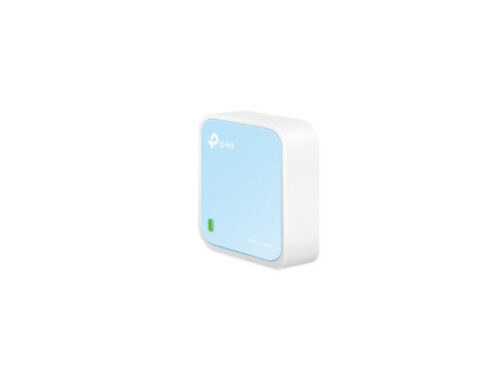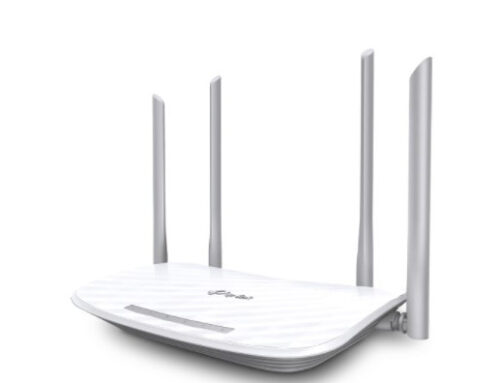At a street price of just $17, the TP-Link TL-WR841N Wireless N Router is one of the cheapest– if not the cheapest– Wi-Fi routers on the market. But that doesn’t mean you should definitely buy one.
But if you can live with some limitations and caveats, there’s value in this bargain basement router. Especially, if you live in a small studio apartment with a modest broadband connection– one that has a download speed of 30Mbps or less– and all you want is to share the Internet with multiple Wi-Fi devices, the TL-WR841N will get the job done.
The router can’t compare to most, if not all, recently released dual-band routers on the market. And in testing, for a dated single-band Wireless N router, it fares quite well, with good data rates and excellent Wi-Fi signal stability.
Certainly, at this price, you can’t expect top speeds or many features. Check out one of these top 802.11 ac routers on the market if you’re willing to pay more to have a Gigabit Ethernet home network with and up-to-date Wi-Fi standards.
Measuring 5.1 x 1.3 x 7.6 inches and weighing just 8.1 ounces, the TL-WR841N is light and compact. It looks like a typical Wi-Fi router with a flat body and two detachable antenna on the back. On top, toward the front, there’s an array of little LED lights that show the router’s status.
Though affordable, the TL-WR841N feels quite solid.
Where To Buy TP Link TL-WR841N Router:
TP-Link TL-WR841N Wireless N Router Reviews: Is it wall-mountable?
Yes. Even though the router is designed to stay flat on a surface, it has holes on its underside in case you want to mount it on a wall.
Does it support Gigabit for fast local wired network?
No. The TL-WR841N has four LAN ports (for wired clients, like a server, a desktop computer or a printer) and one WAN (Internet) port to be connected to an Internet source, like a broadband modem. All of these network ports support the Fast Ethernet standard– in spite of the name, this is a slow standard– that has a top speed of just 100Mbps.
This means wired clients on the network, like servers and desktop computers, will connect to each other at a slow speed, even slower than wireless clients. For a fast wired connection, you’ll want a router with the Gigabit Ethernet (1,000 Mbps) standard, available in most recent routers.
What’s its Wi-Fi standard?
For wireless clients, the TL-WR841N supports the single band 802.11 n Wi-Fi standard with the dual-stream (2×2) setup. (Read more about Wi-FI standard here.) This means it works only on the 2.4 GHz band (most new routers are dual-band and operate concurrently on the 5GHz band) and on paper has a top Wi-Fi speed of 300Mbps.
The 2.4 GHz band is the original Wi-Fi band and is generally congested because of the large number of existing Wi-Fi devices and the fact that certain home electronics and appliances, like cordless phones, also use this band. Crowded air space results in interference and hence reduced real-world Wi-Fi speed, making sure that the router never reaches its theoretical 200Mbps maximum speed.
TP-Link TL-WR841N Wireless N Router Reviews: Does it have a USB port?
No, the TL-WR841N doesn’t have a USB port so there’s no option to physically connect a storage device or a printer. In all, this is a basic home router that has no bells or whistles at all.
Like many routers, out of the box, it comes with a preset Wi-Fi network, the name and password for which are printed on the router’s underside. All you have to do is plug the router’s WAN port into an Internet source, turn it on and you’re good to go.
Does it have a Web interface for customization?
Yes. The router comes with a Web interface for you to change its setting and default Wi-Fi network name. To access the interface, from a connected computer, point your browser to its default IP address: 192.168.0.1. Then log in with the default admin account, which is “admin” for both the username and password. There’s also an easy-to-follow Installation Guide included in case you need help.
It the interface easy to use?
Although the router can display a list of connected clients for you to choose from, all of them are identified with their IP addresses (a string of number and dots) and MAC addresses. When there are multiple connected clients, it can be very hard to determine which one is which.
Does the router have all the common settings and features?
The TL-WR841N is spartan in terms of features. The main notable feature is a simple Parental Control that blocks certain computers in the network from the Internet during certain time.
Other than that it has most other common settings, like port-forwarding, Dynamic DNS, IPv6 support and a few others.
Does it have feature a guest network?
No. There’s no option to create an additional Wi-Fi network for guests.
TP-Link TL-WR841N Wireless N Router Reviews: Performance
Consider that I tested the TL-WR841N at CNET’s offices, where there are walls and many Wi-Fi devices that are out of my control. Usually, walls shorten the reach of a Wi-Fi signal, and other Wi-Fi devices create interference. As with all Wi-Fi routers, your results may vary depending on where you live.
Does it perform well?
At close range (about 15 feet) the router scored a sustained real-world Wi-Fi speed of 83Mbps. Check out the chart below to see how that compares to other routers.
How far is the range?
Further out, it was hard to get connected to the router and hold a steady connection. Typically, in a typical home, chances are you won’t be able to connect to the router from more than 120 feet way. This is short compared to 802.11 ac routers, but compared with single-band Wireless N routers that came out 10 years ago, the TP-Link’s range is rather standard.
Is its performance really bad compared with others?
Yes and no. The TL-WRT841N’s biggest downfall is the fact that it doesn’t work on the 5GHz band.
Note on the charts above, the TL-WRT841N did well on the 2.4 GHz band, having a faster speed than many much more expensive routers, such as the Asus RT-N66U, or the Linksys E4200. However, all other routers on the chart also operate on both the 2.4 GHz and 5GHz band at the same time. These routers were faster than the TP-Link. Also, since most Wi-Fi clients (laptops, tablets and so on) now support dual-band (meaning they can work with either 2.4 GHz or 5GHz band), the 5GHz band is a must if you want fast Wi-Fi speed.
How stable is its Wi-Fi signal?
Outstanding. The TL-WRT841N passed my tress test with flying colors. Once during the 3-day period, this is the test where it was set to transfer a large amount of data between multiple connected Wi-Fi clients and the router didn’t disconnect even.
Conclusion
For those with simple networking needs, the TL-WR841N is a smart purchase.
Keep in mind that if you have a very fast broadband connection– one that has a download speed of 50Mbps or faster– the router might not have enough power to consistently bring that level of performance to your wireless devices. For that you need a dual-band router with Gigabit support, like the Asus RT-N66U or the Linksys E4200, or even better yet an 802.11 ac router. On the other hand, if your Internet speed is 30Mbps for download or slower, the WRT841N will generally suffice.
The fact that its so light, compact and costs only as much as a few cups of coffee, means the TL-WR841N can also be used as a travel router that can quickly create a local network wherever you are or share a wired Internet connection in a hotel-room. It can also be used as a spare router in case your main one at home breaks down.
If you want anything else out of your home network, like Gigabit Ethernet, network storage, faster Wi-Fi speed or better range, the T-LWRT841N is not the router for you.












Leave A Comment